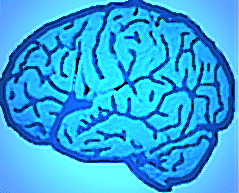
Neuroscience: A Journey Through the Brain
 |
Neuroscience: A Journey Through the Brain |
| Main Page Organization Development Neuron Systems About the site (Glossary) References |
Neuron Migration and Axon Outgrowth
|
Development Home Neural Induction Diversification Migration Synapse Formation |
Neurons migrate from the inside out in the nervous system. Beginning adjacent to the central canal in the spinal cord or near the ventricles in the brain, neurons migrate to their position in the maturing nervous system along glial cell scaffolding. The leading tip of the axon grows and finds its path by means of a growth cone. As the growth cone moves out, axon is synthesized behind the tip. Cues from the target and from the environment direct the growth cone along its path. The mechanisms of growth cone-axon elongation include several elements: actin, myosin, talin, and integrin. The actin fibers loop continuously, like a treadmill. When the axon is growing the talin/integrin complex stabilizes the actin molecules, causing the myosin attached to it to be pushed forward by the physical force, therefore extending the length of the axon.

Sperry proposed the 'Chemoattractant theory' for neural development. He said that the target cells produce some sort of chemical (growth factor or other) that guides the innervating neurons towards it. Other mechanisms for guiding the new axons include guidepost cells, which provide intermediate steps for the neuron along its migratory pathway. When axons originate far from their target, chemical gradients are diluted, and these cells provide additional information for the developing neuron. Other molecules that aid in the migration of neurons to their targets are cell adhesion molecules (CAMs). Located on the exterior of the cell, CAMs can either attract or repel the cell to others.
Created and Maintained by: Melissa
Davies
Last Updated: April 09, 2002 09:05 PM